H (Earring); the 3D printed hearing aid jewellery
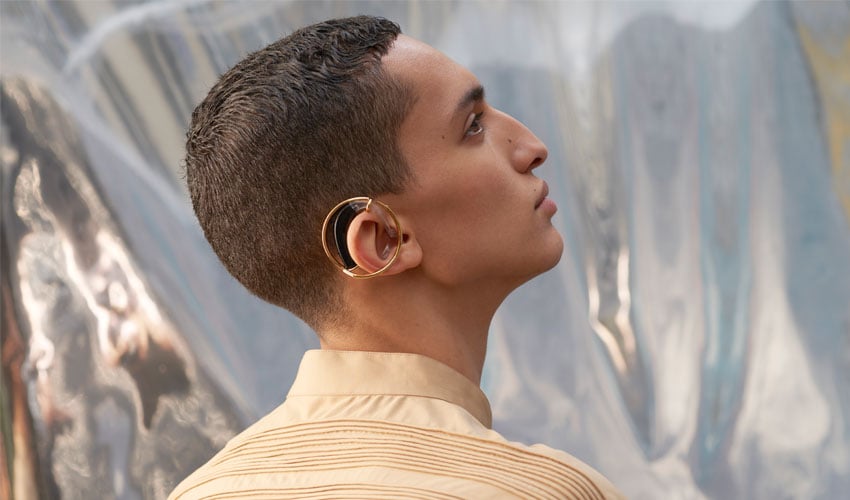
When it comes to relieving the daily lives of people with disabilities, 3D technologies can be useful. It offer the possibility of creating products adapted to each individual and sometimes to completely unpack the person concerned. In any case, this is the feeling of Kate, a hearing-impaired photographer who has been wearing hearing aids for over 25 years. She used two designers, Flora and Julia, to create a collection of jewellery to hang on these devices. The audioprosthesis is then much more aesthetic and the handicap more erased. The collection, named H (Earring) won the Swarovski accessory prize at the 33rd international festival of fashion, photography and accessories of Hyères. We met Kate, Flora and Julie to learn more about their common project.
3DN: Can you introduce yourself and your link to 3D printing?
Hello, I’m Kate and I’m a photographer, with hard of hearing. I asked Flora and Julia to make a collection of hearing aid jewellery for the hearing impaired. A project that is particularly close to my heart.
And we are Flora and Julia (F & J). We are a Paris-based design duo, FandD studio. Our practice is interdisciplinary and leads us to work on projects in product design, accessories and scenography. When Kate offered us this collaboration, we were very excited about the social impact of such a project. Her optimism is part of a global movement of self-acceptance and individuality that characterises our generation. It is also the opportunity to bring together three worlds: medicine, technology and fashion.
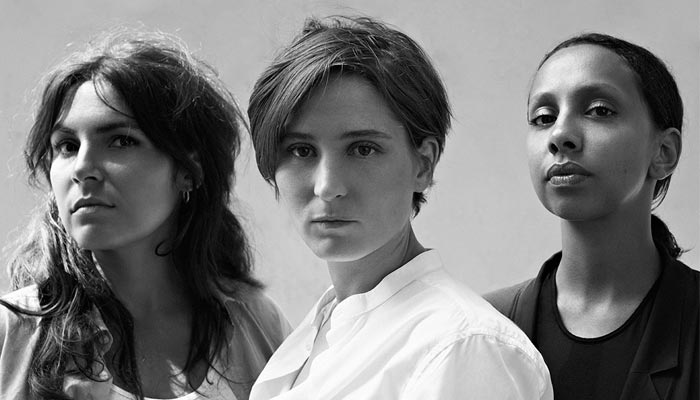
Kate, Flora and Julia
This collection is a real technical challenge, which involves understanding a prosthesis with miniature dimensions and complex curves. That’s why we used 3D scanning. This one allowed us to understand the prosthesis and to model with precision the jewellery intended to be attached to it. Fastening systems have been the subject of special attention and vary from one jewel to another.
All jewellery models have been the subject of several 3D prints. Each print allowed us to validate the positioning of the jewel on the prosthesis and around the ear, to adjust its design and finally certify that the jewel does not create any nuisance for the wearer (hissing, imbalance, alteration of the sound etc.). We have worked extensively on the ergonomics of jewellery so that they are comfortable and do not affect the proper functioning of the prosthesis.
3DN: Why did you start project H (earring)?
Kate : I have been wearing hearing aids for over twenty-five years. I think that the aspect of their contours is too similar to that of a medical prosthesis, and marks the handicap. Prostheses are mostly offered in limited colour ranges close to the colour of the skin and hair (black, gray, beige etc.). They are drawn in such a way as to be the least visible and the most discreet possible. I am not partisan of hiding the disability but on the contrary to expose it with aesthetics and without aggressiveness.
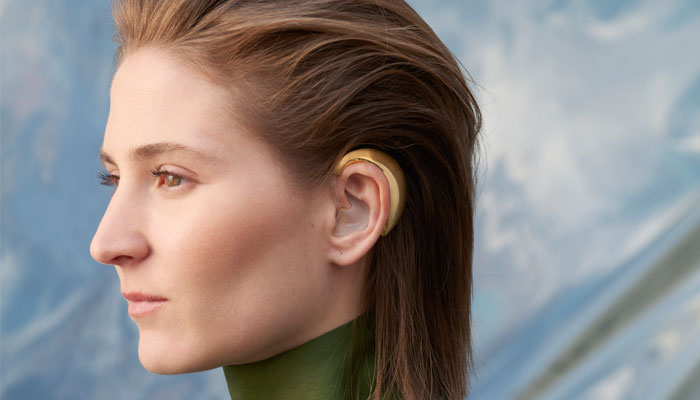
F & J : We have developed skins ranging from the finest to the most visible, alone, in pairs or mismatched, focusing on the contour only, amplifying its curves. The prosthesis is underlined, prolonged, thickened, swollen, it shines and becomes remarkable. The device is no longer hidden, it assumes and displays as an act of claim. This is an opportunity to create a collection of jewellery with unusual formal vocabulary and whose design echoes not only the silhouette of the prosthesis but also that of the ear.
This project is characterised by a duality that places technology at the service of the sensitive. Our drawings evoke this tension and make geometric and regular silhouettes coexist with more organic and altered forms. The choice of more or less precious materials as well as the different surface treatments also reflect this contrast. The evocation of the water and the noticeable fluid in some pieces of the collection comes from a conversation with Kate during the project development process. When she is not wearing her hearing aids, she imagines that her perception of the sound could be similar to ours when we are underwater.
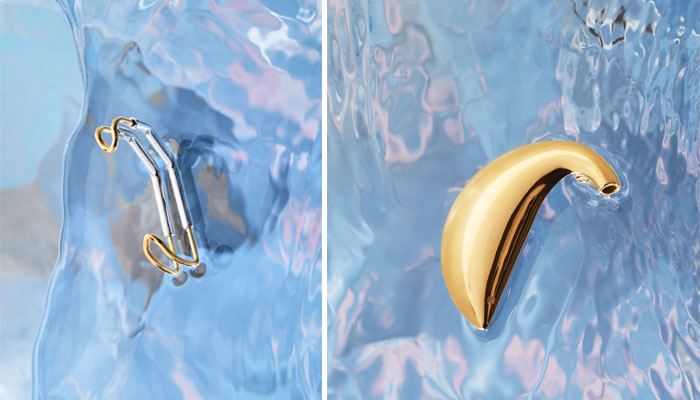
3DN: Why did you use 3D printing? What technologies and materials did you use?
F & J : We work a lot in 3D modeling, the accuracy of this tool is particularly consistent with the scale of the prosthesis. So naturally we used 3D printing, this technique allowed us to quickly adjust the models. By working closely with Kate we have been able to develop a product that is particularly adapted to her needs and requirements. So every modification made on the model could quickly be tested by Kate thanks to 3D printing.
We made a residence at the digital crossroads of the City of Science and Industry which has a 3D printer park. Thanks to their machines, we quickly tested the volumes in order to propose jewels that cling perfectly to the prosthesis. The first 3D prints were made in PLA on Ultimaker 2 and 3 models. The white PLA prints help to better understand the silhouette of the object when worn compared to those in black PLA, by contrast. The objects are particularly small, thin and their silhouettes curvy, it is sometimes difficult to detach the supports of Ultimaker 2 without breaking parts. That’s why we mainly used the Ultimaker 3 for the most complex parts. Its principle of double extrusion makes it possible to distinguish perfectly the support of the part and to detach it easily. Indeed the base of the print is printed with a material soluble in water. To accelerate the process of dissolution of the support, it is necessary to add hot water. Be careful not to exceed 30 ° -35 °, at the risk of deforming the workpiece. We put the piece under the tap, the jet of water makes it possible to remove the most stubborn residues. In general, printing times ranged from 20 minutes to a few hours.
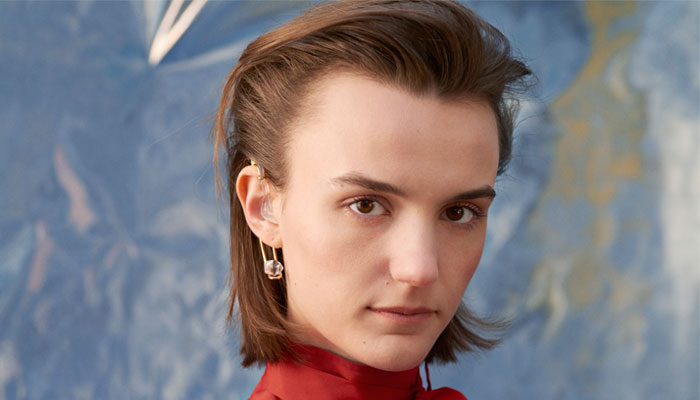
Doing the second time, prototypes were made using the technique of lost wax casting from 3D modelings; it’s about printing the 3D model directly in wax then molding it. The metal is then poured into this mold. This second step was necessary to validate the behaviour of the metal parts, their comfort and the ease of their placement on the prosthesis. As far as the resin parts are concerned, the moulder could work directly from a 3D SLS print, the prints in the thread required a finishing work in post-impression too important.
The final pieces of the collection were made by a craftsman and a jeweller, based in Paris. The set has been assembled, polished and plated in gold and rhodium.
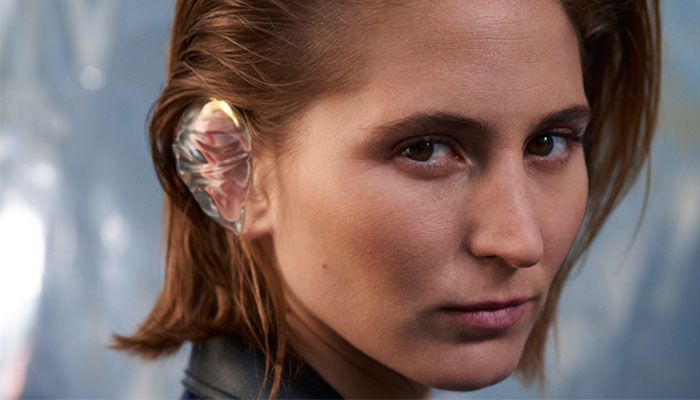
3DN: What is the future of printing for you in the hearing aid industry?
F & J : 3D printing in the prosthetic sector generally can lead to objects that are more adapted to each user since it allows everyone to adjust a drawing according to their morphology. The Hearing project is a jewellery collection to fix on hearing aids. In this sense neither the design nor the technology of the latter have been modified. Nevertheless, in our process of product designer, 3D printing is an extremely useful tool: it allows us to materialise almost immediately our desires and our drawings and this, extremely accurately. In a way, the printer makes us craftsmen of 3D.

3DN: A last word for our readers?
K, F & J : Our jewellery is first and foremost a response to the interests and needs of users, but is also a political tool. We want to take advantage of the incredible power of fashion on consciences to change the vision of the hearing aid, sublimate it to unravel it.
What do you think about Project H (Earring)? Let us know what you think in a comment below or on our Facebook and Twitter pages! Don’t forget to sign up for our free weekly Newsletter, with all the latest news in 3D printing delivered straight to your inbox!







What a fabulous and remarkable idea! I am sure techniques will be refined and developed with time.
I do hope it takes off with a bang particularly for younger women.